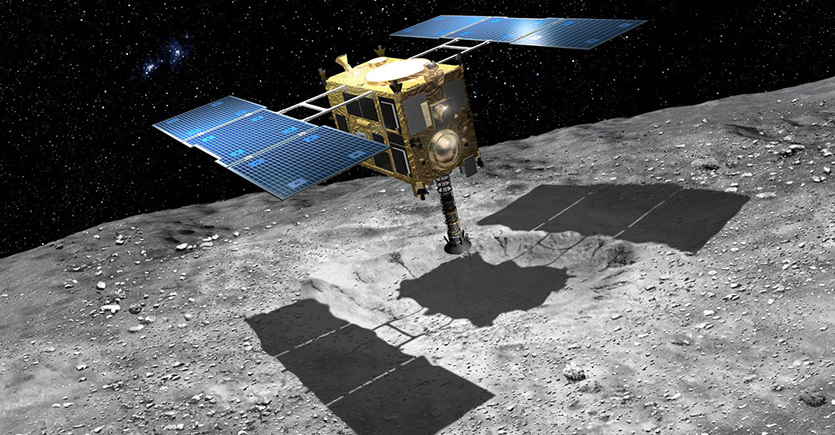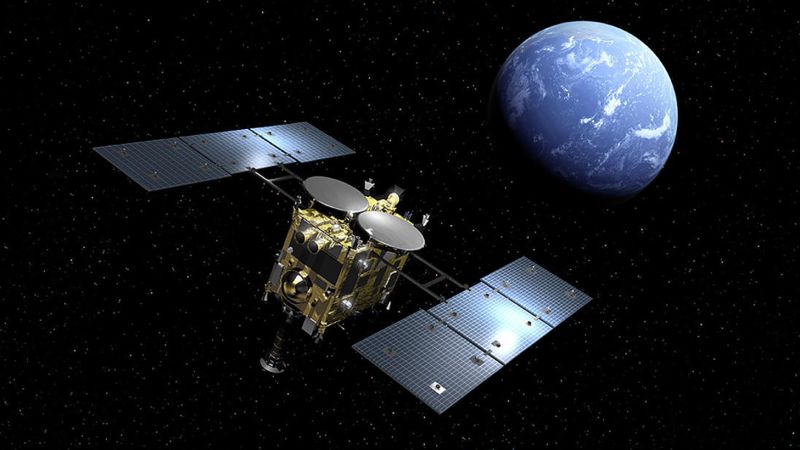How interesting to read and dive into news astronomy.So many interesting things it has in store for us.It has become known that Ultra Safe Nuclear Corporation (USNC) has developed a “flashlight” that emits X-rays and gamma rays. Researchers on the project believe it could be useful for finding resources on the moon. The key to this technology is a radioisotope developed by USNC known as EmberCore. It is similar to the radioisotopes contained in the radioisotope thermal generators used by the Curiosity and Perseverance rovers.

The radioisotope EmberCore can also be used as a power source for the rover, but it has distinct advantages.With some shielding, the EmberCore emits X-rays and gamma rays that can be directed to the location being explored. In fact, the rover’s power source could also power a high-intensity scanning beam. According to a press release provided by the company, the beam could travel many kilometers in airless space. As with many remote sensing devices, this beam would then partially reflect back to a sensor mounted on the vehicle and could be analyzed to study the material from which it was reflected.
But X-rays have an additional function that anyone who has seen medical imaging is familiar with—they can see what is beneath the surface of an object. Gamma rays can do that, too. A controlled X-ray and gamma ray remote sensing platform that also serves as a power source for the rover is an exciting innovation. The project has received funding from the NASA Institute for Advanced Concepts (NIAC). This preliminary study could result in a mission to Shackleton Crater or the Sea of Tranquility on the moon.
Study finds asteroids consisting of piles of debris nearly impossible to destroyInternational team of scientists studied three tiny dust particles collected from the surface of the ancient 500-meter-long asteroid Itokawa. The samples were delivered to Earth by the Hayabusa-1 probe.Astronomy news today and really are so interesting you can’t tear yourself away.
Asteroid Itokawa
The results of the study showed that the asteroid Itokawa, which is 2 million kilometers from Earth, is collision-resistant and would be difficult to destroy.Fred Jourdan, a professor at Curtin University and lead author of the paper, said Itokawa is almost as old as the solar system itself. According to the professor, the asteroid is not a single block of rock, it consists of loose boulders and rocks.According to predictions, the survival time of monolithic asteroids the size of Itokawa in the asteroid belt is only a few hundred thousand years.

The huge impact that destroyed the monolithic parent asteroid and formed Itokawa occurred at least 4.2 billion years ago. Such an astonishingly long survival time for an asteroid the size of Itokawa is explained by the shock-absorbing nature of the rocky material,” Jourdan explained. — “In short, we found that Itokawa is like a giant space cushion and very difficult to destroy. “And that’s breaking astronomy news about this asteroid.
The researchers used two complementary methods to analyze the three dust particles. The first method is electron backscatter diffraction. This can be used to measure whether any meteorite impact struck the rock. The second method is argon-argon dating, which is used to date asteroid impacts.Co-author of the study, Adjunct Professor Nick Tim said that the longevity of asteroids with piles of debris was previously unknown. This compromised the ability to develop defense strategies in case one of them hurtled toward Earth.
“We set out to answer whether pile debris asteroids were resistant to impact, or whether they would shatter on the slightest collision,” said Associate Professor Tim. — “Now, we have found that they can survive in the solar system for most of its history. There should be more of them in the asteroid belt than previously thought. So there’s a better chance that if a big asteroid rushes toward Earth, it will turn out to be a pile of debris.
That’s why there are so many test astronomy news.To be sure and to study the issue thoroughly. The good news is that we can also use this information to our advantage: if an asteroid is detected too late for a kinetic push, we can potentially use a more aggressive approach to throw the asteroid off course without destroying it. “The key is to follow astronomy science news and not be afraid of change.